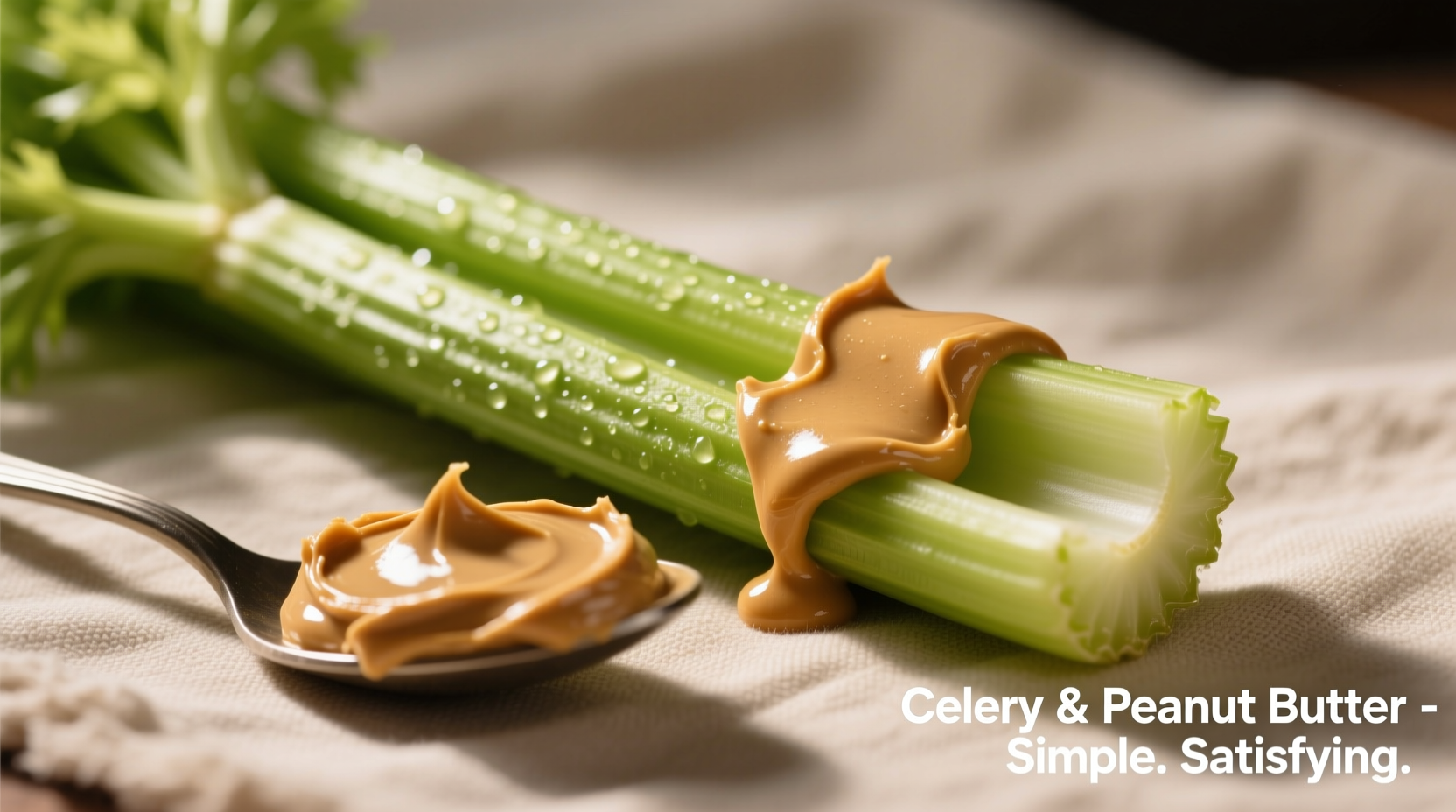When you combine crisp celery with creamy peanut butter, you're creating more than just a nostalgic childhood snack - you're crafting a nutritionally balanced treat that satisfies hunger while delivering essential nutrients. This timeless combination, affectionately known as 'ants on a log,' has endured for generations because it perfectly balances texture, flavor, and nutrition in one simple preparation.
The Evolution of a Classic Snack
While many assume this snack is a modern invention, the pairing of celery and nut butters has historical roots that predate the "ants on a log" name. During the early 20th century, celery was considered a luxury vegetable often served with dips at social gatherings. The specific combination with peanut butter gained popularity during the Great Depression when affordable, shelf-stable peanut butter became a protein source for families. By the 1950s, the "ants on a log" name emerged as parents creatively presented this snack to children, with raisins representing ants marching along celery "logs."
| Era | Snack Presentation | Cultural Context |
|---|---|---|
| 1920s-1940s | Celery served with nut butters as appetizer | Luxury vegetable at social gatherings |
| 1930s-1940s | Basic celery and peanut butter combination | Affordable protein source during Depression |
| 1950s-present | "Ants on a log" with raisin toppings | Child-friendly snack presentation |
Why This Flavor Combination Works
The magic of celery and peanut butter lies in complementary flavor chemistry. Celery contains phthalides that create a mild, slightly bitter crunch, while peanut butter delivers rich umami notes from roasted peanuts. This contrast creates a satisfying sensory experience that keeps you coming back for more. Food scientists at Cornell University have documented how the fat content in peanut butter carries flavor compounds that enhance our perception of celery's subtle herbal notes.
From a nutritional standpoint, this pairing creates a balanced mini-meal. The USDA FoodData Central database shows that one medium celery stalk (40g) contains just 6 calories with 1.6g of fiber, while two tablespoons of peanut butter (32g) provide 190 calories with 8g of protein and 16g of healthy fats. Together, they create a snack with sustained energy release that won't cause blood sugar spikes.
Perfecting Your Celery and Peanut Butter Snack
Follow these professional chef techniques to elevate this simple snack from ordinary to extraordinary:
- Select the right celery: Choose deep green, firm stalks with leaves still attached - this indicates freshness. The inner stalks tend to be more tender and less fibrous.
- Prep properly: Wash celery thoroughly, then cut into 3-4 inch pieces. Use a small knife to gently scrape the inside groove to remove tough strings.
- Temperature matters: Chill celery sticks for 30 minutes before filling - this enhances crunch and prevents sogginess.
- Peanut butter texture: For easier spreading, warm natural peanut butter slightly (10-15 seconds in microwave) but avoid overheating which separates oils.

Creative Variations for Different Needs
While traditional ants on a log use raisins as "ants," this snack adapts beautifully to various dietary requirements and preferences. Understanding these context boundaries ensures everyone can enjoy this nutritious combination:
- Nut-free version: Sunflower seed butter works as an excellent alternative, providing similar texture and nutrition without allergens. The American Academy of Pediatrics confirms sunflower seed butter as a safe alternative for 90% of children with peanut allergies.
- Vegan upgrade: Choose natural peanut butter with just peanuts and salt (no honey), and top with cacao nibs instead of raisins for an antioxidant boost.
- Protein power: Mix chia seeds or hemp hearts into the peanut butter for additional protein and omega-3s.
- Sweet tooth solution: For children resistant to plain peanut butter, blend in a small amount of banana puree for natural sweetness.
Nutritional Benefits You Can Feel
This simple snack delivers impressive nutritional benefits that extend beyond basic hunger satisfaction. According to research published in the American Journal of Clinical Nutrition, regular consumption of nut butters like peanut butter is associated with lower risk of cardiovascular disease. The combination of celery's potassium and peanut butter's magnesium creates an electrolyte balance that supports hydration - particularly valuable for active children.
Registered dietitians often recommend this snack as part of balanced eating patterns because it naturally combines all three macronutrients: carbohydrates from celery, protein from peanut butter, and healthy fats from the peanut butter. This balance helps regulate appetite hormones, making it more satisfying than snacks containing only one macronutrient.
Common Mistakes and How to Avoid Them
Even simple snacks can go wrong if you overlook key details. Here are professional solutions to common celery and peanut butter problems:
- Soggy celery: This happens when celery sits too long with moist fillings. Solution: Prepare no more than 2 hours before serving, or create a moisture barrier by lightly coating the inside of the celery with a thin layer of lemon juice first.
- Hard-to-spread peanut butter: Natural peanut butter often separates. Solution: Stir thoroughly before use, and if still too thick, add a single drop of neutral oil (like avocado oil) to improve spreadability without altering flavor.
- Bland flavor: Some celery varieties lack intensity. Solution: Sprinkle a tiny pinch of flaky sea salt on the peanut butter before adding toppings to enhance all flavors.
Making It Fun for Kids
The "ants on a log" concept works because it engages children's imagination. Take it further with these creative presentation ideas:
- Create "caterpillars" by lining multiple celery pieces end-to-end with peanut butter and raisins
- Use different colored dried fruits (cranberries, blueberries) as "ants" for visual variety
- Add mini chocolate chips as "ant eyes" for special occasions
- Let children assemble their own using a snack bar setup with various toppings
Child development experts note that involving children in food preparation increases their willingness to try new foods. The simple assembly of ants on a log provides an excellent opportunity for developing fine motor skills while creating positive associations with healthy eating.











 浙公网安备
33010002000092号
浙公网安备
33010002000092号 浙B2-20120091-4
浙B2-20120091-4